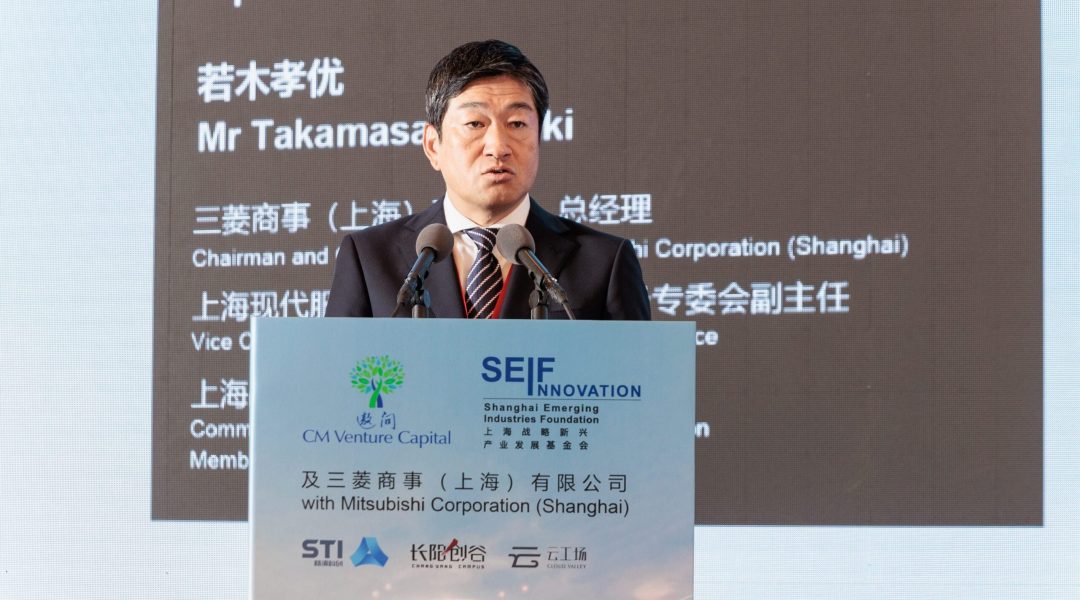
The highly-anticipated annual Innovation China Conference event took place in Shanghai this year, and was attended by over 150 guests. Themed “AI+”, it focused on 3 areas where AI will drive progress: Materials, Industrials & New Energy. With soaring costs for AI large language models today, China will find it difficult to catch up with the US in the short-term due to a variety of constraints. However, as it is an economy founded on manufacturing, China enjoys great potential for AI to empower its industrialization and productivity. This is why “AI+” was chosen as the theme for the 2024 Innovation China Conference, which is now in its 10th year.
Organized by the SEIF (Strategic Emerging Industries Foundation) and managed by CM Venture, Mitsubishi Corporation (Shanghai) is a lead sponsor. This year’s event was also supported by Shanghai Yangpu Technology & Innovation Group (STI), Chang Yang Campus & Cloud Valley (office property development).
Attended by Fortune 500 companies, LPs, CVCs, startups, policymakers and partners, this year’s MNC speakers included BAT (Matt Hodgson), L’Oréal (Valentin Peuch-Lestrade & Dr Yue Qiao), Nomura, Huawei and more. CVCs attending included Arkema, GE HealthCare, Goodman, Heraeus, Happiness Capital, ORIX Group Investment, SCG Investment, SABIC, Samsung Electronics, Sasol, ST Engineering, Zeiss Group, and more. We’ve picked out a few insights gleaned from the 22 speakers at the conference.

In Dr. Zhou Min’s keynote ‘AI for Materials’, she highlighted the challenges of AI in materials R&D, including:
Materials Genome Engineering in China, by Dr Yi Jin
Dr. Yi Jin of 2Prime Ventures introduced the progress of China’s Materials Genome Initiative from recent years. The US and China launched their respective Materials Genome Initiatives in 2011 and 2015, both aiming to shorten the time for materials R&D while reducing costs. Currently, much of the work focuses on the field of materials data, including:
From a company perspective, AI+ Material Companies often face a choice between becoming a platform company or a product company. Due to different industrial environments and ecosystems, different companies have made different choices:
Our POV on AI+Materials can be summarized as:
Overview of AI for Materials, by Dr Min Zhou
AI computing is very power-intensive. The evolution of AI systems in the last two years has led to higher requirements in power systems to support its operations.
Machine Learning Applications & AI in New Energy, Chen Shengjun
Mr. Chen Shengjun, CTO & VP of Concord New Energy (CNE), shared how AI is used in new energy systems:
A few startups have also explored how AI supports new energy markets and new energy development:
There is a wide possibility of application scenarios of these new technologies mentioned. With AI and big data behind them, the efficiency and effectiveness levels can only get better, and with that, we believe the future for AI+ Materials/Industrials/Energy is very promising.